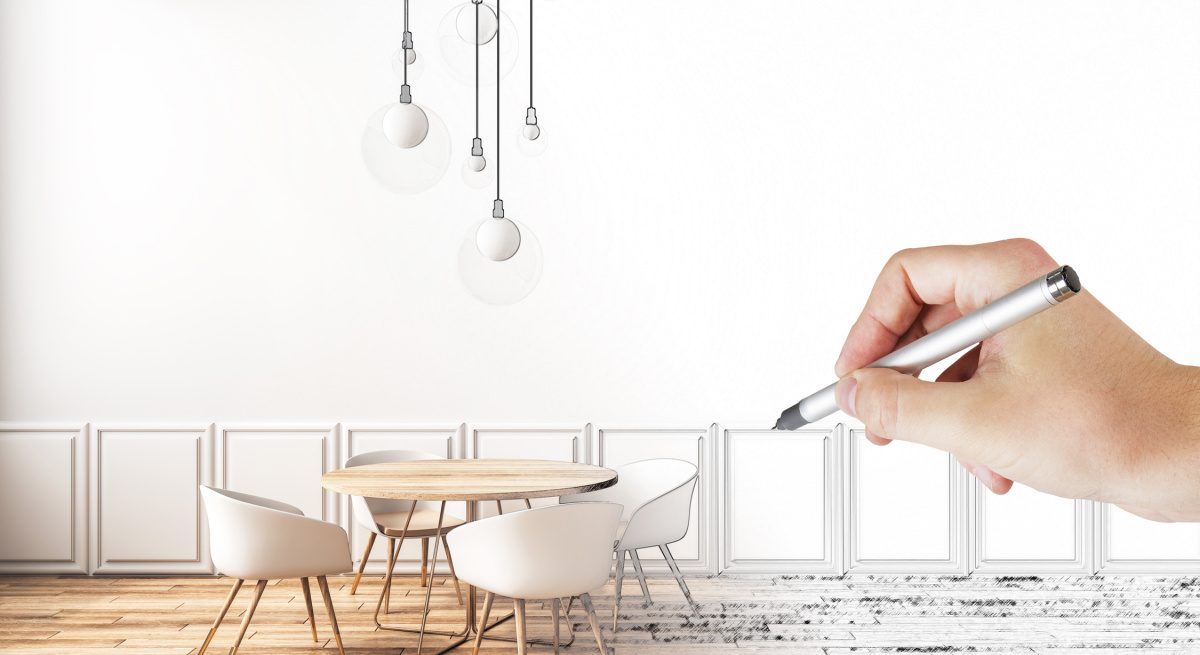Cost and Effect: The Role of Value Engineering in Restaurant Construction
4 Min Read By Bruno Hanelt
How value engineering can be a restaurant construction solution in the face of rising prices and unpredictable supply chains
As the prices of construction materials skyrocket due to rising inflation and supply chain woes, budgeting for commercial development has become significantly more challenging. It isn’t just the higher price tags, but the difficulty of sticking to budget constraints over the life of a project. Fluctuating prices and increasingly prevalent and unpredictable supply chain disruptions have changed the game, adding cost (and stress) and making it tougher to complete projects on time and on budget.
The good news is, there are ways for commercial construction companies and their clients to offset rising materials prices. Value engineering, creatively leveraging efficiencies and cost savings throughout the restaurant construction and reconstruction process, can mitigate some of the worst effects of an uncertain supply chain.
Understanding how value engineering strategies work, how to unearth hidden opportunities for savings and efficiencies, and appreciating the difference that a dedicated commitment to value engineering can make, are all critical steps in becoming more informed and engaged restaurant clients.
Acceptable Alternatives
One of the best to save money and avoid costly delays is simply to use alternative building materials, products, or finishes. In some cases that means turning to generic or standard options in lieu of custom materials or finishes, but the savings can be well worth the switch. The best and most experienced construction professionals in this space are well-prepared to present structurally and aesthetically similar alternative options to clients. Alternate materials can lead to savings not just from lower direct costs, but also from the standpoint of ease and speed of acquisition. Existing relationships with suppliers who tend to have those materials in stock can help, as well.
Talk the Talk
Construction professionals also need to be able to educate their clients about different construction and design materials and systems. Not just about any meaningful differences, but also about the impact on project timelines and the downstream cost-benefit. Some clients may be experienced with the minutiae of the industry and others might not be as familiar with different options—and making sure they are informed and can offer educated feedback and signoff is extremely important.
Happily, growing numbers of restaurant owners and operators are becoming more willing and able to move forward with different material and design options, both on structural elements and even more visible fits and finishes. Some clients may have specific restrictions due to brand mandates or operational considerations and may subsequently have a less flexible list of required materials and systems. Even in some of those cases, however, creativity and client engagement can sometimes come up with mutually agreeable solutions that save a significant amount of time, money, or both.
Work Around It
A surprisingly large piece of the value engineering puzzle comes from relatively modest or simply design changes, especially with regard to working around specific features or mechanical systems that would be expensive to relocate. Sometimes changing a wall location by a few inches can save a lot of money on bulkheads or ductwork. Similarly, if relocating a wall slightly means you don’t have to move an existing piece of infrastructure (e.g. a sprinkler pipe), that can save significant amount of money. Essentially any time there is sometimes structurally or functionally significant “in the way,” there are likely options available that can work around it.
Lines and Designs
Plumbing infrastructure is one of the biggest cost drivers in any construction scenario, but especially in the restaurant industry. A working commercial kitchen obviously has a more crowded and complex array of underground pipes and sanitary lines, and designs that consolidate those lines in such a way that you reduce the need to trench through an existing slab any more than is necessary can save a not insignificant chunk of change. Something as simple as repositioning a couple of sinks can make a dramatic cost difference without impacting the flow or functionality of the kitchen.
Another big area of potential savings is in large systems and equipment, where substantial variation in product or brand cost can save a substantial amount of money in a single line item. Walk-in freezers and large refrigeration units, and ranges and other cooking equipment that is cheaper or uses less power can save
Starting with Finishes
Finishes are a big opportunity for savings and value engineering. For example, instead of putting tile down, polished concrete might save a considerable on your flooring budget, and result in a cleaner, more visually appealing result. As a general rule, the restaurant owner or operator is primarily focused on value, while the architect is understandably focusing on aesthetics.
One of the roles of a strong construction team is to bring both sides together, presenting potential alternatives (and potential opportunities for savings). Lighting is another chance to save a great deal of money, simply by going with a different brand or slightly different configuration.
Rethink Space Allocation
One of the (many) industry shifts resulting from the pandemic is that many restaurant brands and businesses are realizing that they no longer need or want as much interior seating. While back-of-house space is actually more expensive from a cost-per-square-foot basis, value engineering is not just about the budget in the short term, but also about long-term savings, as well. If a revised design results in less wasted space makes your restaurant better able to service pickup or to-go customers, the savings in the long run could be dramatic.
Don’t Cut Corners
On a similar note, construction professionals with extensive restaurant construction and design experience also understand the impact of durability and functionality on the long-term value equation. You want a place that looks good—and also lasts.
Commercial kitchens and dining facilities place a high demand on the building and saving a few bucks now can cost you a lot more in a few years. Simply vinyl over drywall protection around a mop sink might pass code but is likely to fall apart in a few years. Don’t just epoxy over a painted concrete floor: use more durable products that might cost a little more today but will last a lot longer. In some cases, the more durable low-maintenance option isn’t obvious. An aluminum and glass door rear door might see less durable than a standard steel option, for example, but actually requires far less maintenance and upkeep. Just one of many creative—and sometimes counterintuitive—ways in which value engineering can have a substantive impact on your buildout budget and your bottom line—potentially for many years to come.


